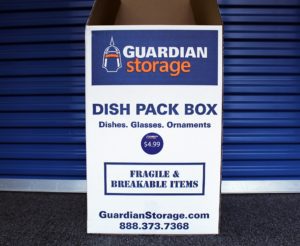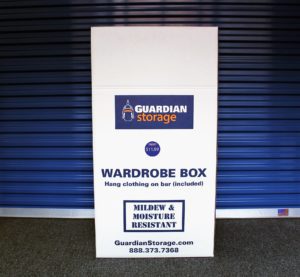How to Pack Boxes For Moving
Packing Boxes for Moving: A Stress-Free Guide
Moving into a new home can be an exciting milestone, but the packing process often feels overwhelming. From protecting your fragile dishes to organizing heavy books, packing properly can make a huge difference in the ease and safety of your move. In this guide, we’ll show you how to pack boxes the right way — including what boxes to use, essential supplies, and tips to make the process efficient and secure.
Why Proper Packing Matters
Poor packing is one of the top reasons items get damaged during a move. Whether you’re moving down the street or across the country, how you pack determines whether your belongings arrive intact. Understanding box types, packing materials, and the correct method for securing your items ensures a safer, smoother move — and less stress on moving day.
Gathering Your Packing Supplies
Before you tape a single box shut, make sure you have all the right tools:
- Corrugated cardboard boxes: Strong and durable boxes, available in small, medium, large, dish, and wardrobe sizes.
- Packing paper: Acid-free paper to wrap items and fill empty spaces.
- Bubble wrap: Ideal for fragile items like glassware or electronics.
- Paper pads: Padded sheets used for large or oddly shaped breakables.
- Packing tape: Heavy-duty tape that can secure box seams. Avoid duct tape and masking tape.
- Markers and labels: Use a labeling system by room, category, or color code.
General Packing Tips
- Always tape the bottom of the box with heavy-duty packing tape before adding items.
- Label boxes clearly with room names and contents.
- Fill boxes to capacity without overstuffing to prevent collapse or breakage.
- Place heavier items at the bottom and lighter items at the top of each box.
- Use packing paper to cushion both the bottom and top of every box.
Choosing the Right Box for the Right Items
Not all boxes are created equal. Using the right box size and type for your belongings can prevent damage and make packing more efficient.
Packing a Book Box

Book boxes are perfect for heavy items that would be too much for a larger box to handle. They’re easy to lift and ideal for concentrated weight.
- Best for: Books, tools, canned goods, silverware, files, picture frames, toiletries.
Pack books spine-down to avoid bending pages. Sharp items like knives should be sheathed or wrapped in an oven mitt. Fill all empty spaces with packing paper to avoid shifting. For loose or small pieces, use resealable bags to prevent clutter and protect other items.
Packing a Dish Box

Dish boxes are specially designed for fragile items. These boxes have reinforced walls to absorb impact and reduce breakage.
- Best for: Glasses, plates, mugs, china, vases, lamp bases, small appliances.
Wrap each item individually with packing paper or bubble wrap. Stack items vertically rather than flat to distribute pressure evenly. Layer with packing paper between each row. For large fragile items like vases, use paper pads and pack upright to prevent breakage.
Packing a Medium Moving Box

Medium boxes are the most versatile and commonly used. They offer a good balance of size and weight.
- Best for: Clothing, toys, games, decorations, kitchen tools, shoes, and office supplies.
Use packing paper to cushion the bottom and sides. Try to pack items from the same room or category to stay organized. Label clearly and write “Top Load” on boxes with breakable items like lampshades. Medium boxes should be lifted by one person, so avoid overloading.
Packing a Large Moving Box

Large boxes are great for lightweight but bulky items. Be cautious not to overload these as they can become too heavy to move safely.
- Best for: Comforters, pillows, towels, curtains, blankets, soft toys.
Start with heavier soft items like towels, then layer in lighter ones such as pillows. Do not compress soft items too much, as they need airflow and space to retain their form. Mark these as “Light Items Only” to prevent others from stacking heavier boxes on top.
Packing a Wardrobe Box

Wardrobe boxes come with a metal hanging bar and are essential for moving clothes you don’t want to fold or wrinkle.
- Best for: Dresses, suits, blouses, winter coats, long skirts, and delicate clothing.
Simply move items directly from your closet to the wardrobe box while still on the hanger. For long-term storage, avoid wire hangers — use wooden or padded ones to prevent stretching or damage. Cedar rings are great additions to protect clothing from pests. Use extra space at the bottom to store shoes, blankets, or seasonal accessories — just be sure they don’t wrinkle the hanging garments.
Organizing Your Move Room-by-Room
To avoid chaos, pack one room at a time. Begin with rooms you use the least, such as guest rooms or storage areas, and finish with high-traffic zones like kitchens and bathrooms. This system keeps your house functional for longer and allows you to track what’s been packed.
Inventory and Labeling System
Creating a master list of your packed items can help keep track of everything. Use a spreadsheet or inventory app to log box numbers and contents. Mark each box with its destination room and a brief description. Use color-coded tape or stickers for visual organization — red for kitchen, blue for bedroom, etc. This makes it easier for movers (or friends helping) to put things in the right place.
Tips for Packing Like a Pro
- Pack a first-night box: Include essentials like toiletries, medications, chargers, snacks, and one outfit.
- Wrap cables with care: Use twist ties or zip ties and label them.
- Use towels as padding: Wrap fragile items in towels or blankets to save space.
- Stack boxes by weight: Lightest on top, heaviest at the bottom during transport and storage.
- Label fragile boxes clearly: Add “Fragile,” “This Side Up,” and “Handle with Care” box labels as needed.
How Guardian Storage Can Help
If your move involves some downtime between locations, or you just need to get boxes out of the way early, self storage is a great solution. At Guardian Storage, we offer clean, secure, climate-controlled units perfect for temporary or long-term storage. You can store fully packed boxes, seasonal items, or even your entire wardrobe — and access it whenever you need.
Storage Success Starts with the Right Space
Now that you know how to pack boxes for moving, it’s time to make your move as seamless as possible. With the right supplies, the right techniques, and the right self storage solution, your moving day will feel a lot more manageable.





